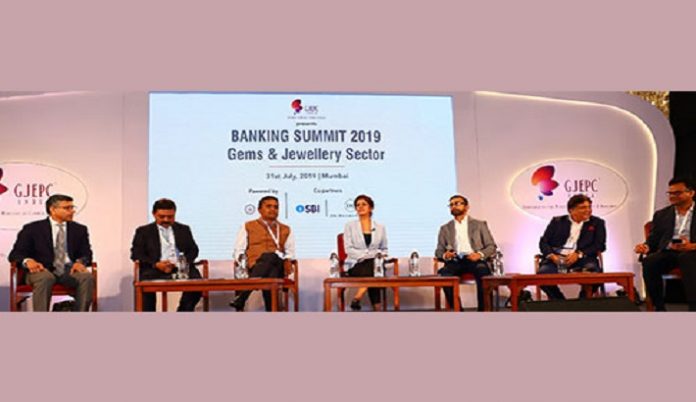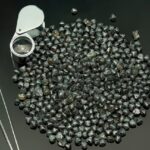The Gem & Jewellery Export Promotion Council’s (GJEPC’s) Banking Summit 2019 which began with an inaugural session, reported yesterday, continued with three panel discussions.
The first one, on “State of the Industry”, had Nimesh Patel, CFO, De Beers; Ajesh Mehta, Member-Trade; Dilip Shah, Co-Convener, BITC, GJEPC; Manish Jivani, Convener, MSME, GJEPC; Ghanshyambhai Dholakia, Member-Trade; and Sabyasachi Ray, ED, GJEPC participating on the panel; and it was moderated by Manisha Gupta, Editor – Commodities and Currencies, CNBC-TV18.
Manisha opened the discussion commenting on the market situation and the price of gold which had gone up recently, and this being on the eve of India International Jewellery Show, (IIJS), she wondered if it would impact the show and what the mood of the industry would be. She went on to question each panellist on different aspects of the current scenario.
Ray began by noting that co-incidentally, the price of gold always goes up just prior to IIJS. However, he said that they had had a very good response with 30,000 visitors already registered, and he was confident of good volume of orders being booked at the show.
He also spoke of the rise in import duty on gold which having risen from 10% to 12.5% which was causing further hardships; and the current structuring of gold loans and bank guarantees which meant that working capital was blocked. He said the GJEPC was in discussions to see if some amelioration of the situation could be worked out.
Mehta said that earlier companies were smaller in size and therefore more agile. Now there are larger companies with more capex making them less agile. Last year miners and retailers had both taken corrective measures leading to liquidity issues for the midstream. The g&j manufacturing industry realised the gravity of the situation quite late, but were now taking measures to meet the situation. By Diwali, he opined, the supply demand situation would be balanced.
Jivani said that MSME diamond companies have a huge potential but face problems when it comes to procuring rough, and participating in tenders. He suggested that miners should have a sight system for the MSMEs too.
Where jewellery is concerned Jivani said that each region of the country has its own specialisation and is uniquely positioned to supply jewellery, but they are unable to access world markets. He said the government is coming up with several initiatives, but the MSME manufacturers are unable to avail of them as they do not have the knowledge or the wherewithal to deal with all the formalities. He felt that the GJEPC should come up with some schemes to facilitate these companies. He said the first step had been taken by widespread seminars providing information and popularising all the options available to the manufacturers.
Ghanshyambhai Dholakia pointed out that India which accounts for 18% of the world’s population consumes only 6% of diamond jewellery. He said there was a lot of potential if the unorganised retailers got organised. He also felt that the faith and trust of the industry had been eroded and that there was a need to build back the confidence amongst all stakeholders. He asserted that though some of the larger companies were growing, the industry as a whole was not growing.
Patel said that the place that the industry finds itself currently is not new, it is a recurring situation and that every few years the industry goes through a downward spiral, he said recalling the experience of 2008 and then 2016. He expressed the confidence that as in earlier times, the industry would weather this current problem this time too. He felt that the challenges were not a result of the fundamentals of the industry – the Millennials are buying more diamond jewellery than any previous generation he noted. Rather, the current situation was born of external economic factors like the US Government shutdown 10 days prior to Christmas buying season in 2018; stock market volatility; the US-China trade tensions this year; the Hong Kong problem and a weak Gulf market. As a company, De Beers had taken some measures to support the industry like reducing production and offering clients flexibility, he said.
With regards to promotions and expanding markets, Shah said that the US being the biggest market, the GJEPC would explore the idea of holding an exhibition there. He said that the GJEPC’s Buyer-Seller Meet (BSM) model has worked well and the organisation would look at holding more BSMs with different countries.
He also felt that the US works on the memo system, which poses a big challenge for exporters and hence smaller companies were staying away from that market. He said though the months of April-May-June had been very quiet, he expected the market to pick up soon.
There was also some discussion on the anomaly between the prices of rough and polished and a feeling that rough prices should be lowered.
News Source: gjepc
Disclaimer: This information has been collected through secondary research and TJM Media Pvt Ltd. is not responsible for any errors in the same.




























